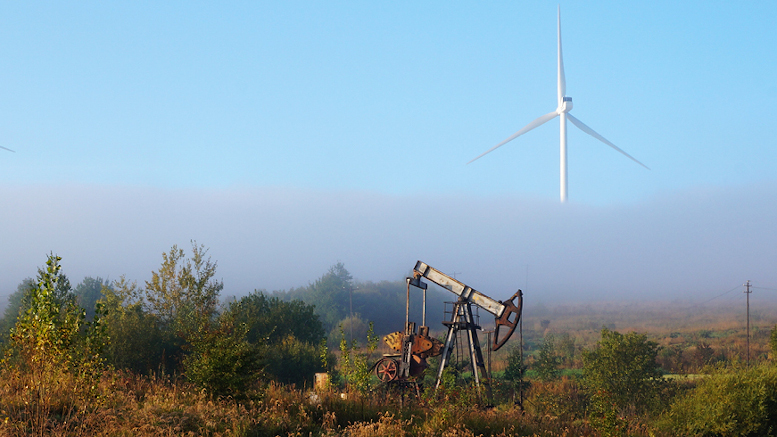Greyson Van Arsdale is a member of Socialist Alternative in the US.
Millions of households across America that rely on a vehicle to get around are spending much more on gas this month, as Biden’s ban on the import of Russian oil worsens the global supply crunch. The average price of gas in the U.S. was over $4.25 per gallon on March 21 compared to $3.53 last month, with a current average price over $5.85 per gallon in California.
The wild fluctuation of gas prices comes from the early days of the pandemic, where demand for gas was significantly reduced during the global shutdown, and production was slowed. Once workers were expected to resume normal life, demand skyrocketed again, but production did not rise to meet it, leading to high prices at the gas pump.
Now, alongside the U.S., countries including Canada, the United Kingdom, and Australia have banned the import of Russian oil. Previously, Russian oil made up one out of every ten barrels the world consumed. Gas prices temporarily shot up to $130 per barrel, leading to massive profits for oil tycoons and a tight crunch on working peoples’ wallets, and is expected to stay at or above $100 for the time being. Despite Biden’s insistence on ramping up U.S. oil production, even oil executives are admitting that companies can’t simply ramp up production to close this gap, in part due to supply chain issues and worker shortages.
Increasing gas prices, as well as inflation generally, are eating more and more of workers’ paychecks and leading to an untenable situation especially for low paid workers who rely on their cars and don’t have access to public transportation. A solution must be found. But debates around the energy crisis have largely ignored the elephant in the room: that continuing to burn fossil fuels is just as untenable.
A Darkening Horizon
The 2021 report from the Intergovernmental Panel on Climate Change (IPCC) presents a dire situation. For years, experts on climate change have warned about a point from which there is no return, where the curbing of emissions will no longer be able to avert massive damage to the planet’s ecosystems and everything that depends on them. Now, the IPCC has reported that many effects of climate change are “irreversible” — meaning they cannot be undone in the short term, and could take millennia to reverse course.
According to the IPCC, mountain and polar glaciers will continue melting for decades or centuries, and permafrost thaw is “irreversible at centennial time scales.” Global sea level rise is certain — according to the IPCC report, global mean sea level will rise by about 2 to 3m in the next 2,000 years if warming is limited to 1.5°C, 2 to 6m if limited to 2°C and 19 to 22m with 5°C of warming. At even 1.5m of sea level rising, major low-lying areas around the world will be completely flooded, including major cities like Tokyo, Mumbai, and New York City.
Sea level rise, and the direct repercussions of it, are far from the only disastrous impacts. Even inland areas will be — and already are — at higher risk of disasters like droughts, flooding, and storms. According to the World Health Organization, climate change already causes about 150,000 deaths annually, and is expected to cause 250,000 annually between 2030 and 2050.
The IPCC report is clear — the only way to prevent worsening impacts of climate change is for global carbon emissions to rapidly reach net zero.
Profit Versus Survival
The world emitted 22.1 billion tons of CO2 in 1988, the year the IPCC was formed to observe the onset of climate change. By 2019, yearly emissions of CO2 had grown to 36.70 billion tons — an increase of 66% since 1988. Emissions dropped in the year 2020 due to the global COVID-19 lockdown, but only to 34.81 billion tons, or a decrease of 5.1%.
When Biden took office, he came out with a pledge that was called “bold” by some — to cut emissions in half by 2030, and get the U.S. on track to net zero emissions by 2050. In theory, such a plan would be enough to limit planetary warming to 1.5 degrees Celsius. However, current policies in place suggest that the planet is still on track for 2.9 degrees of warming before 2100, which scientists warn would have devastating effects on society like those described in the IPCC report.
Right now, due to the war, there is a significant gap between the energy being produced and the demand for energy. There is not an overnight fix to simply provide the world with more oil to bring prices down.
As a result, there exists currently a major opportunity to rapidly expand renewable energies. Right now, the Biden administration should be rapidly working to approve permits for solar and wind farms that can start to reduce U.S. dependence on oil and gas. (So far, the administration has approved only four solar farms, and no wind farms.)
Instead, the Biden administration and governments worldwide are scrambling with an approach that proposes working people take short-term measures to limit their energy consumption, during a crisis that is likely to last months if not years. The International Energy Agency has released a 10-point plan to deal with the energy crisis, proposing that working people use mass transit, carpool, participate in “car-free Sundays,” work from home three times a week, and so on. While working people pinch as many pennies as they can, Biden met with oil and gas tycoons to echo their “drill, baby, drill” approach, urging them to ramp up production anywhere possible.
“That means you producing more right now, where and if you can,” the U.S. energy secretary said in the meeting.
The administration’s response to the crisis suggests that, despite sloganeering to the contrary, Biden is ultimately still an oil-and-gas president like any other. This opening would be the optimal point to publicly call for a massive expansion in renewable energy. Instead, Biden is putting his faith in the oil tycoons, in the service of profits for oil and gas stockholders.
A Massive New Undertaking
The failure of the Biden administration and Congressional Democrats broadly to pivot to prioritizing expanding renewable energy is revealing of an important fact. It shows how, rather than simply being loath to undercut the oil and gas industry when it’s performing to a standard that provides cheap energy to the masses, they are determined to buoy the industry when it’s unable to keep up with demand.
This is an unacceptable, and frankly suicidal, approach. The party that has publicly crowed that it “believes in science” should be the first to point out that the very continued existence of the oil and gas industry in the long term is a threat to human society. The climate movement needs full independence from the Democratic Party, which has over and over demonstrated little interest in acting with urgency.
In the next few years, millions of people will be impacted by the disasters of climate change — losing their homes, their livelihoods, or even their lives. Working people must, on a basis independent from the two parties of big business, do what the institutions of profit will not: organize to effect a wholesale transition of the economy from fossil fuels to renewable energy on the basis of a democratically controlled energy sector. There is no time to waste.



